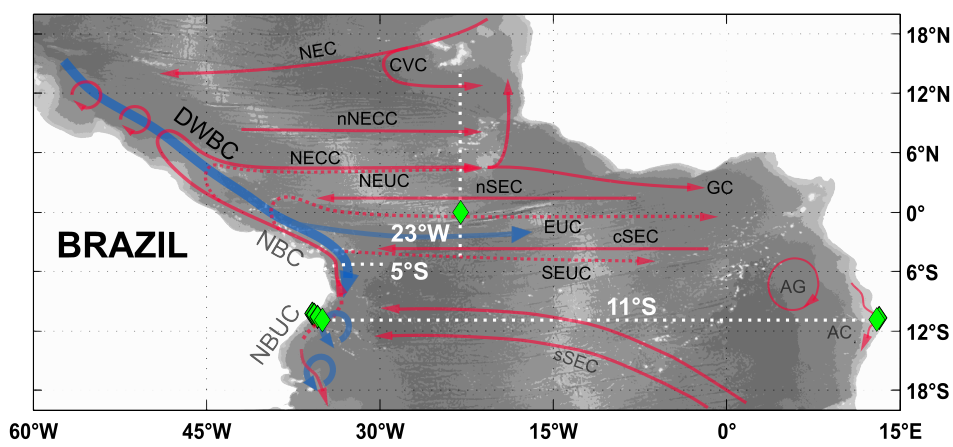The variability of the circulation in the tropical Atlantic is closely related to rainfall variability over Africa and South America, therefore it has an important socio-economic impact. The current system off Brazil is a key region for research because the Atlantic Meridional Overturning Cell (AMOC) as well as the Subtropical Cells (STC) are focussed there, which makes it a good place to detect variations in those cells. Long term observations of the western boundary current system – the North Brazil Undercurrent (NBUC) and the Deep Western Boundary Current (DWBC) are conducted with moored sensors at 11°S (during the periods 2000-2004 and 2013-today) and ship-based measurements at 5°S and 11°S. The strength and variability of the AMOC at 11°S are inferred from bottom pressure measurements on both sides of the Atlantic basin. 15 years of moored velocity measurements on the equator at 23°W allow for a valuable insight into the complex equatorial current system. Here, transport variations of the Equatorial Undercurrent (EUC) and, consequently, the signal propagation from the western boundary towards the climate relevant tropics are investigated. Additionally, ship-board measurements of the last decades enable the detection of water mass changes in the tropical Atlantic.
Objectives
- Continue all mooring based long term observations at 11°S and 23°W
- Analyse the different long term observations with respect to time series aquired by other RACE observatories, and other national and international projects (e.g. PIRATA)
- Understand the role of the tropical oceans for climate variations on interannual to multidecadal time scales, assess risks and hazards, evaluate models, improve climate prediction
Methods
- Data from moored instruments (current velocity, temperature, salinity, bottom pressure)
- Ship-board measurements (current velocity, temperature, salinity, dissolved oxygen)
- Satellite data (sea level elevation, sea surface temperature, sea surface salinity, wind), reanalyses, data from the Argo-program

